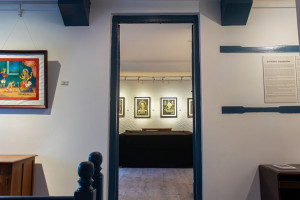Arts
The absent art critic in the Nepali art scene
To push the discussion of art forward and to see art in more meaningful ways, focus has to be on developing better art critics, say artists.
Srizu Bajracharya
Not long ago, Mukesh Malla visited a gallery studio where an artist performed an act of sleeping as art. Malla was unable to comprehend the art. He was stirred with the questions—how is this art? What was he to think of this performance?
As part of his performance art, the artist had come into the room, tucked himself into bed and slept for about 15 minutes, recalls Malla. “And then he got up and the act was over; I was surprised and dismayed,” he says, who is no stranger to the art scene having been writing and critiquing art for over 45 years now. “But let’s suppose among the audience was someone younger with limited exposure to the art world. They would easily get confused about art and performance art. And this is where the role of art critics comes in,” he says.
An art critic’s job is to guide the conversation of art beyond the art itself. If art is everywhere, the role of the art critic is to insinuate reflection and give a depth to its understanding, said Malla. Needless to say, their role in understanding art is crucial.
But over the years, although more and more people are writing about art, there is still a dearth of art critics and serious art writing in the country, says Malla and other individuals from Nepal’s growing art community. And over and over, in discussions of why the Nepali art scene has not received much attention in various platforms, people in the art community have continually pressed how there are not enough people writing about art, moreover, writing significantly and seriously about art.
“There are just a handful of writers writing about art, and among them, the ones who are critiquing art are even less,” said Devendra Thumkeli, an art writer. Thumkeli, who is also an artist, has been writing about art for 20 years now. And according to him, the genre of art writing and critiquing has not progressed the way it should have in Nepal.
The idea of writing about art is still relatively very recent and its purpose has not grasped seriousness, he says. “I see a number of reasons why writers and journalists don’t continue writing about art. One, they don’t see a career in it; two, they are not guided or mentored; and three, art itself as a culture and a sectional beat is not emphasised and explored that much,” said Thumkeli.
If comparisons had to be drawn, people were talking more about art in the early ’60s to ’90s than now, say art critics and creatives the Post spoke to. “There were a lot of people writing about art, and there were more people talking about art. But now that sort of discussion and interest seems to have gone missing,” says Sharareh Bajracharya, an arts educator and the current director of the Kathmandu Triennale, an art event.
If one is to trace the beginning of art criticism, Madan Chitrakar, a senior art critic and writer, says it could lead to Narayan Bahadur Singh. “He used to write in Gorkhapatra and discuss art and point out prominent art movements in the world and here in the country,” says Chitrakar. In those days, however, journalists and writers wrote more about the traditional art of Nepal.
And then there were the likes of Abhi Subedi, columnist and critic, and Kedar Bhakta Mathema, former vice-chancellor of Tribhuvan University, who used to write about art as commentaries, says Sangita Thapa, founder and director of the Siddhartha Art Gallery. “We could see a gradual growth but it was never enough. Even writers like Sanjeev Upreti and Archana Thapa used to write and there were artists who were writing about art like Kanchan Budhathoki, Sophia Pande, Kurchi Dasgupta,” she said. Thapa herself had started writing about art to give information about artists and give a deeper sense of their works.
But even with these interventions, there is still a long way to go to have Nepal’s art movements and histories documented. Many articles briefly talk about art events and their impact but rarely have they been able to spark a momentum. Rather, many articles that have been written have all been lost to time. “There has been no investment in art-related studies. Which institution today has a collection of art writings and essays from Nepal?” says Malla.
Malla and Chitrakar both point out how many people still don’t know who the prominent artists of the country are and how few are acquainted with the history of a certain body of artwork. “Whatever is written now is more scattered and confusing than ever,” says Malla.
“But the job first is to give information, then an analysis of the work. They also have to be able to discuss its history, its roots—as we can’t discuss art in isolation—and then it's finally about judging the work of art,” says Malla. “But that is not really present in the Nepali art industry,” he says.
And many in the art community in Nepal say that writers and reporters, in general, only judge the work but dismiss the background of the work, of where it fits in the movement of art and history and its exploration.
“Writers have no basic idea of writing about art or the history of Nepali art, and so oftentimes they easily get swayed with the ideas of the artists, sometimes even with their propaganda,” he says. “They are unable to question the artists, their accountability or shed light on their works—especially when it’s an issue-based work.”
Around the world, however, art writers and critics are an integral part of a growing art scene. They are the ones backing artists and they are the ones helping to document the history of the world and art. “These people are the ones who spur the conversation about art in meaningful ways. They are the ones promoting art and pushing the art scene and engaging people,” said Chitrakar. “The role of art critics and writers are pertinent to the growth of art engagement and exchange and sadly here, that has not been worked upon earnestly.”
And although the art scene of the country has become more vibrant, there’s still a lot that needs to be done in terms of making sure that these works are remembered and discussed. “We don’t have art journals dedicated to serious art writing, there are more newspaper articles but by random journalists. However, the question that we need to look at more seriously and invest in is how much do these journalists understand art themselves to guide a conversation of art,” says Thapa.
But many also believe that the regression in the trend of writing about art could be tied to the larger background of how art institutions themselves fail to emphasise on the country’s own art history and art writing and documentation. “Art schools need to teach students about the country’s art history because that is how we can contribute to understanding the nuances of our art culture,” says Malla.
And what is also equally important to ensure a serious art writing culture is to have access to abundant art literature. “That is something that we are missing significantly and this is also what is creating a gap of knowledge. In these years of writing about art, I have made it a point to create an art library for myself to support my arguments and information. But the onus of creating such support for art writers and even artists go to institutions and the state,” added Malla.
But there are hopeful developments to be positive about, say art writers and critics. “Yes, there’s a lot that we need to do but I am certain that things are changing. They are more writers entering the art scene, who are curious and interested to discuss art more profoundly,” says Thapa. To keep the interest alive and thriving, under her leadership, the Siddhartha Art Foundation has started a mobile library with a good collection of art literature from South Asia.
Nepal Academy of Fine Arts has also been emphasising on art writing courses and the history of Nepali art. And Kathmandu University Art + Design has also been looking to start an art writing course, as an elective course with the understanding that this will develop the prospect of art and its discussion.
“Things are progressing definitely, but we still need to work from within institutions to break the barriers that stop us from discussing art,” said Thumkeli. “Because the more we write about art and culture, the more we will be able to develop our society—in insightful ways.”




 18.12°C Kathmandu
18.12°C Kathmandu
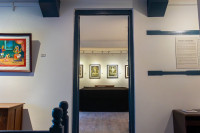
%20(1).jpg&w=200&height=120)
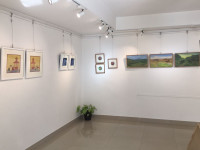
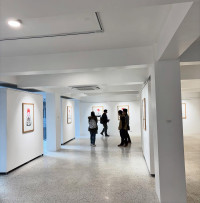
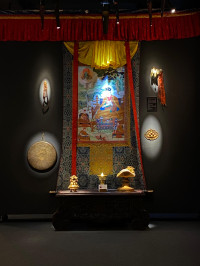
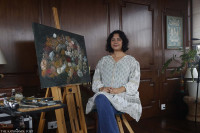
%20(1).jpg&w=300&height=200)
